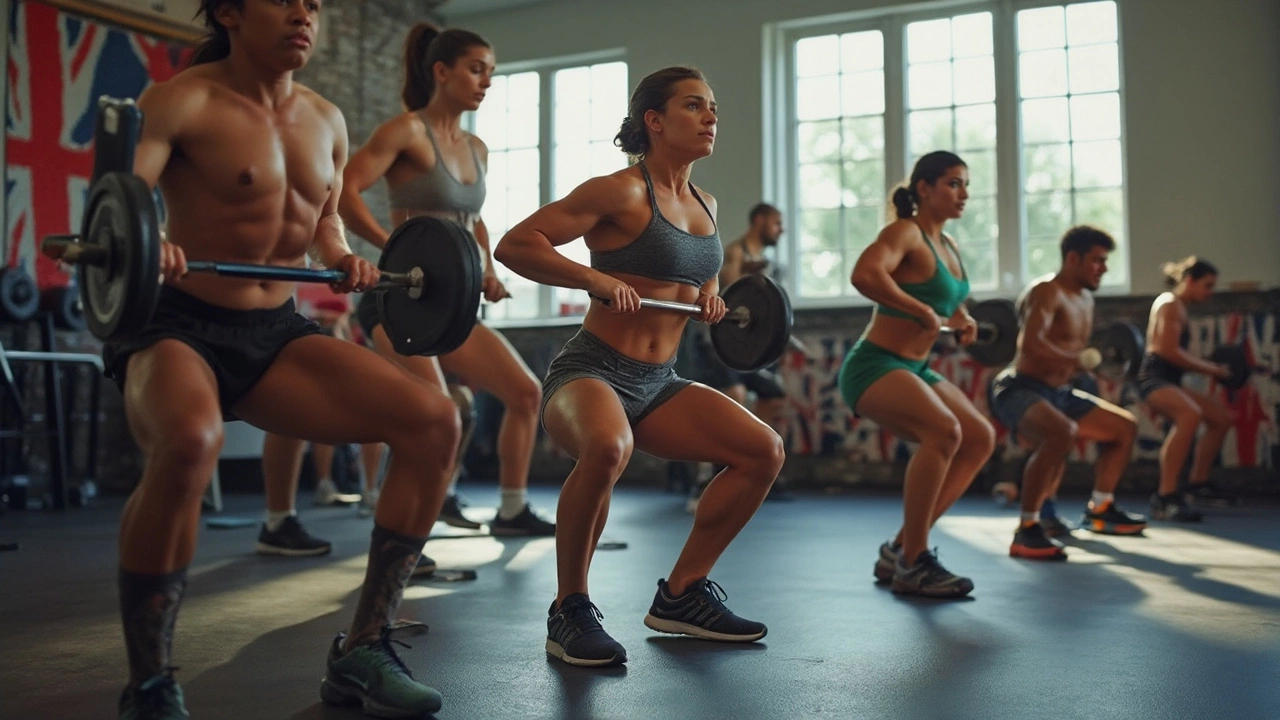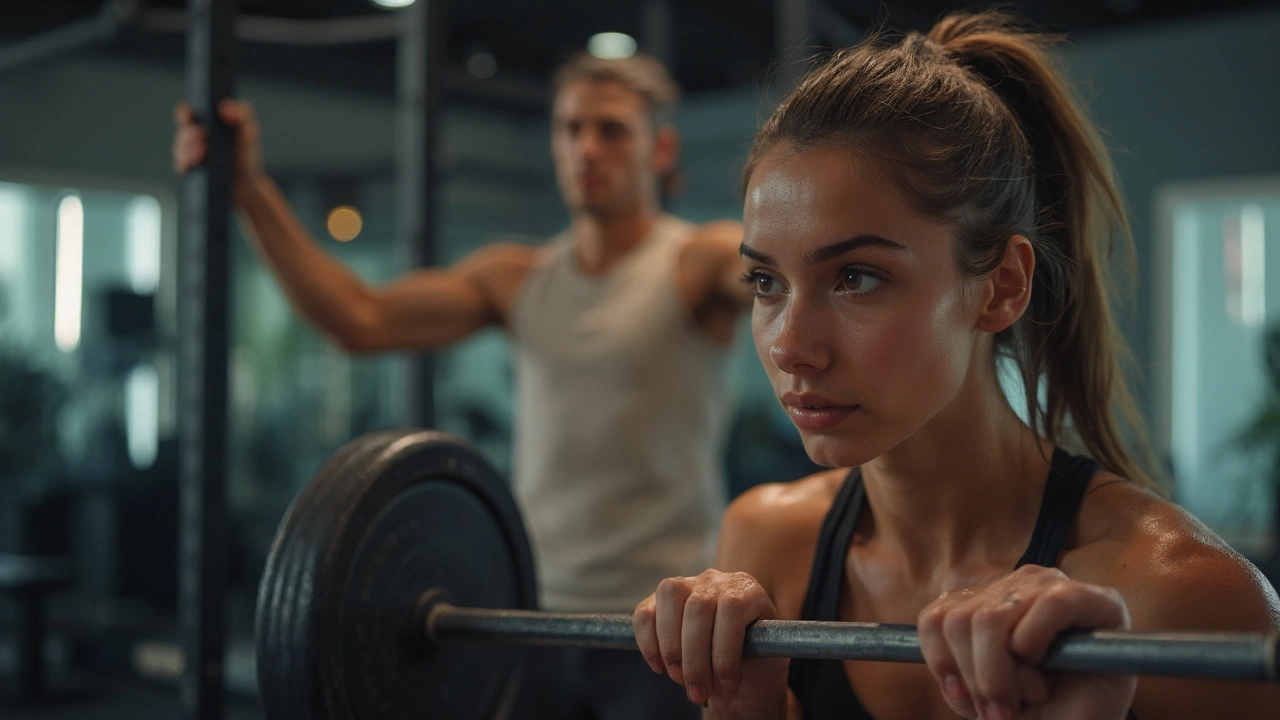
If you ask a group of trainers to name the single best strength exercise, you’ll probably spark a real debate. But there’s one move that almost everyone agrees is king—because it works more muscles, burns more calories, and transfers to real-life strength better than any other. Ready for a straight answer? It’s the squat. Simple, but crazy effective.
Squats make your body do just about everything at once. They hit your legs, sure, but also your core, glutes, and even help your upper body brace under the weight. If you only have time for one move in your workout, squats give you the most bang for your buck. They show up in daily life, too—every time you get up from a chair or pick something off the floor, you’re basically squatting.
There are dozens of popular strength training moves out there—think push-ups, lunges, deadlifts, bench press—but not all exercises pack the same punch. The squat takes the top spot because it works so many muscle groups at the same time. You get your quads, hamstrings, glutes, and hips involved, but your core and even your back muscles fire up to help keep you stable.
Scientifically speaking, compound movements (those that use more than one joint and several muscles) torch way more calories and build greater overall strength than isolation moves. Squats check all the compound movement boxes. And because they mimic the way humans move every day, you’re not just building gym muscles—you’re getting better at life stuff too.
Don’t just take my word on it—the National Strength and Conditioning Association (NSCA) calls squats the foundation of lower body muscle building. Studies show that squats have higher muscle activation across the legs and core than leg presses or machine-based moves.
| Exercise | Muscles Targeted | Calories Burned/10 min |
|---|---|---|
| Squats | Legs, glutes, core, back | 90-135 |
| Leg Press | Legs | 60-90 |
| Bench Press | Chest, arms | 55-80 |
Bottom line: if you want the most results in the shortest time, squats give you more for your effort. Whether you’re a beginner or can already squat your own bodyweight, this is one move that always delivers.
Here’s the deal with squats: they’re the foundation of pretty much every powerful strength training plan out there. Whether you do them with just bodyweight or stack on heavy weights, squats force loads of muscles to work together. Your glutes, hamstrings, quads, lower back, and core all team up every time you squat down and stand back up. That’s major muscle recruitment packed into a single move.
What makes squats so valuable for muscle building is the ‘compound movement’ factor. You’re not isolating just one muscle group. One single squat asks your whole body to pitch in. Plus, doing squats can crank up your heart rate, which means you burn more calories than most people expect from a strength move.
Some studies have shown that barbell squats—even at moderate weights—push testosterone and growth hormone levels higher for a bit, both of which can help with getting stronger and building muscle. That’s a perk you just won’t get from, say, bicep curls or leg extensions alone. Plus, squats are super adjustable. You can do them with just your body weight, with dumbbells, a barbell, or even at home holding a backpack full of books. There’s something for every level, from total beginners to powerlifters setting new records.
Just to give you a concrete idea of muscle activation, check out this little breakdown:
| Muscle Group | Activation During Squat (Approx. % of Max) |
|---|---|
| Quadriceps | 75-90% |
| Glutes | 70-85% |
| Hamstrings | 50-65% |
| Core | 40-60% |
No expensive gear, no gym membership needed. Just drop into a squat, and you’re getting a solid strength training session right there—even in your living room or backyard.
When people hear "squats," their first thought is probably thighs and glutes. But there’s way more to this move. Strength training with squats taps into a stack of benefits you might not expect, and they spill over into so many parts of your life.
First up: squats hit your core hard. Every time you lower and stand up, your abs and lower back kick in to keep you steady. This helps with more than just gym progress—it means better posture and less back pain carrying groceries, working at your desk, or picking up your kids.
Squats also fire up your metabolism. They’re intense, so your body needs extra energy to power through and recover. That means more calories burned, even after your workout is done (a perk called "afterburn"). For anyone chasing fat loss or better fitness, that’s gold.
Here’s a fact that surprises a lot of people: squats support bone health. When you load up with weights (even something as simple as a kettlebell or dumbbells), you put healthy stress on your bones. That encourages your body to build them up stronger—just like muscles.
Check out this quick breakdown to see the real impact:
| Benefit | How Squats Help |
|---|---|
| Core Strength | Stabilizes torso and protects spine |
| Calorie Burn | Bigger muscles mean more energy used |
| Posture | Balances muscle groups, fights slouching |
| Joint Support | Keeps knees and hips healthy if done right |
| Bone Density | Builds stronger bones from resistance |
The magic of squats is that they fit anyone. Whether you’re an athlete or just want to keep up with your dog at the park, they build real-life fitness you’ll notice every day. That’s why most trainers put squats at the top of any good strength training plan.

Jumping right into heavy squats isn’t a great idea if you’re new to strength training. Form always comes before weight. Bad form can mess up your knees or back, and nobody wants that. The good news? You don’t need fancy gear or a gym membership to start squatting safely.
It’s easier to build good habits right from the start. Once bodyweight moves feel easy, add resistance like holding a dumbbell or a backpack to keep getting stronger. Remember: pain in your joints or lower back is a red flag—stop and double-check your form or ask someone to watch your squat.
Here’s a quick table showing how often beginners should squat and how to progress as you get stronger:
| Level | Reps/Sets | Frequency | Progression Tip |
|---|---|---|---|
| Beginner | 3x10 | 2x/week | Bodyweight only |
| Intermediate | 3x12–15 | 2–3x/week | Add light weights |
| Advanced | 4x8–12 | 3x/week | Barbell or heavier weights |
Just stick with it. Your muscle building results will show up way faster when you squat smart and pay attention to the basics.
When it comes to strength training and especially squats, plenty of folks get tripped up by some classic mistakes. The best way to make real progress is by avoiding these slip-ups right from the start.
| Mistake | Result | Easy Fix |
|---|---|---|
| Knees Past Toes | Knee pain | Push hips back, keep weight on heels |
| Not Low Enough | Less muscle work | Squat to thigh-parallel at least |
| Back Rounding | Back injury | Engage core, keep chest proud |
An extra tip: record yourself squatting from the side. Watching it later helps you catch things you might not feel in the moment. Paying attention now saves you from pain and slow progress down the road. Getting your strength training right from the start is worth every bit of effort.
If you want more from your strength training and make your squats go further, a few tweaks can seriously push up your progress. Most people get stuck doing the same thing over and over. That’s how you plateau. Here are some proven ways to keep those results coming.
| Squat Type | Muscles Worked | Typical Calorie Burn (per 10 min)* |
|---|---|---|
| Bodyweight Squat | Quads, glutes, core | 50-70 |
| Goblet Squat | Quads, glutes, core, arms | 70-100 |
| Barbell Back Squat | Quads, glutes, hamstrings, core, back | 90-130 |
*Calorie burn numbers are rough averages for a 150 lb person working at moderate intensity.
Change things up regularly, stick with your plan, and those strength training results won’t just stall—they’ll get better every month. Just remember, a little smart effort beats grinding yourself into the ground any day.